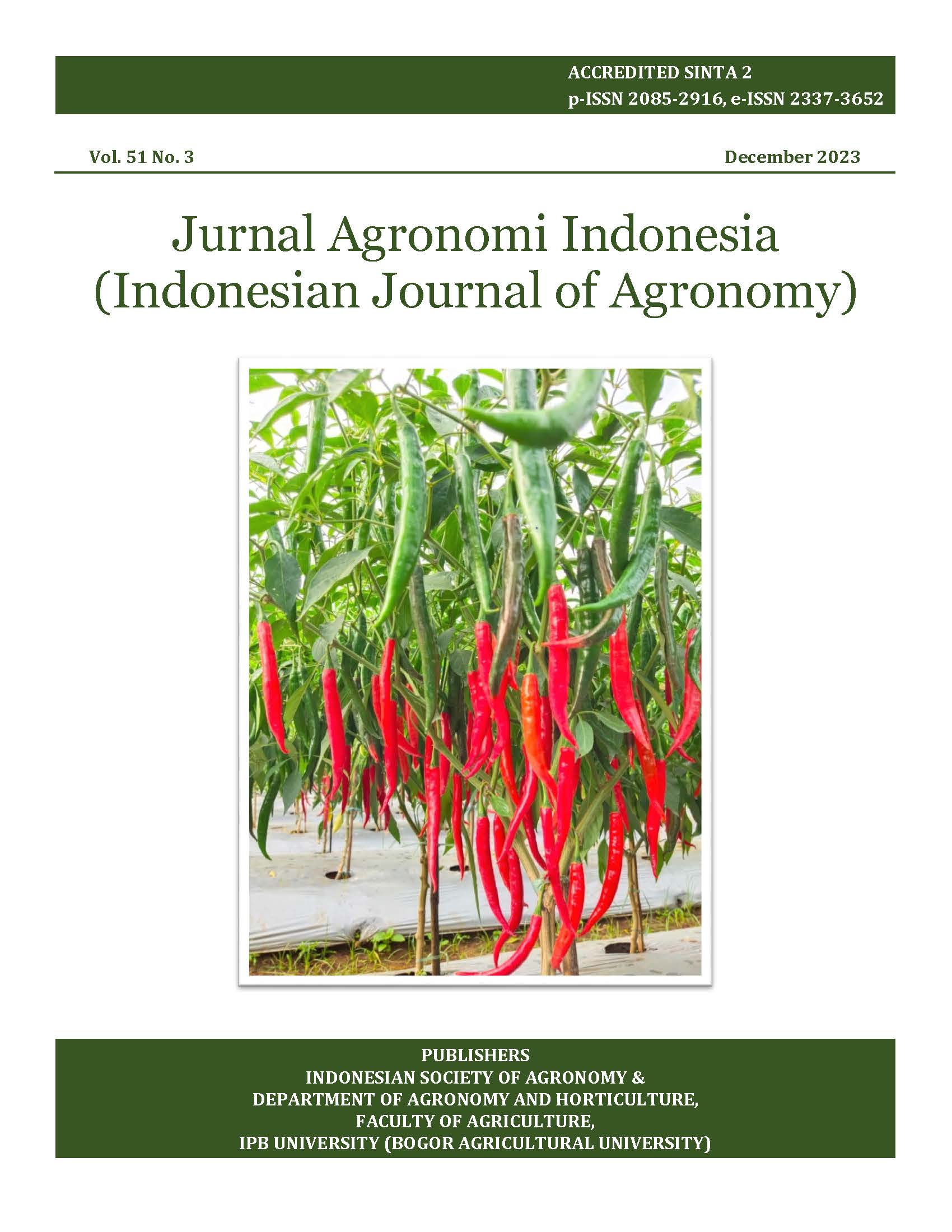Rainwater harvesting and water-saving irrigation for enhancing land productivity in upland rice cultivation
DOI:
https://doi.org/10.24831/jai.v51i3.50325Abstract
The development of dry land requires precise planning due to its climate-sensitive nature. It is essential to ensure water availability to meet crop water requirements. Rainwater harvesting remains underutilized in upland rice cultivation. The field experiment was conducted in Tulungagung Regency, East Java province, Indonesia from August to December 2017. The research aimed to develop water harvesting technology and irrigation management for upland rice. The nested design was the experimental design with irrigation levels and varieties of upland rice treatments. Four irrigation levels were farmer's customs, 70%, 85%, and 100% of the crop water requirement, while the varieties were Situ Patenggang, Inpago-9, and Inpago-11. Our findings revealed that 70% of the crop water requirement was sufficient for upland rice cultivation in dryland. Crop yields were unaffected by the irrigation level. Differences among upland rice varieties were only significant on plant height character. There was an increased cropping index due to additional water sources in the last months of the dry season until the early rainy season. Rainwater harvesting can be adapted to climate change, especially in areas that often experience water shortages.
Keywords: dry land, channel reservoir, irrigation level, crop water requirement













